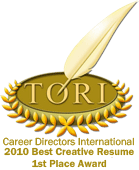
Applicant Tracking Systems often seem like the monster in the machine to a job seeker. Here’s how to tame them.
Applicant Tracking Systems or ATS, the computers that filter qualified candidates from unqualified candidates are finicky beasts. You must feed them the information they’re looking for in ways they can recognize. Otherwise, your resume goes into the unqualified basket.
First, accept that companies use Applicant Tracking Systems. We’re not going to change that. They may be flawed and filter out a lot – some say as many as 75 percent – of qualified candidates, but they save HR time. They’re not going away.
Second, understand that in most cases, the only time you have to worry about keeping an ATS happy is when you apply online. There ARE other alternatives to applying online. Read about them here: Reach the Hidden Job Market: Why clicking the apply button isn’t enough.)
If you choose to apply online, here is how to format your resume to keep the ATS happy.
Your text resume
Use a plain text version of your resume. You’ll find many instructions for reformatting your Word resume to please an ATS, but I find it much easier to save the Word resume as a plain text document and start with that. It takes care of several formatting problems without a thought, including:
- No contact information in the document header. Text documents don’t have headers, so there’s no confusion.
- Lines must not touch text. There are no lines in a text document.
- No boxes, columns, charts, graphs, clip art, photographs, or other fancification. Again, it’s a text document. You simply can’t get this wrong.
Formatting secrets
So, just using a text document takes care of several of the big issues in getting your resume past the ATS. Here are other formatting hints that can help keep you in the qualified pile.
- Avoid underlining. If a resume is printed and then scanned into an ATS, underlined words can be unrecognizable.
- Use a sans serif font. Common ones such as Arial, Tahoma, and Calibri are recommended. The serifs (the little curly parts of certain letters in fonts such as Times New Roman) can cause some letters and words to become unreadable.
- Use ALL CAPS only for section headings: SUMMARY, WORK EXPERIENCE, EDUCATION, CERTIFICATIONS, MEMBERSHIPS, and VOLUNTEER WORK. Don’t deviate from these names for the sections. “Learning Expansion” may not be recognized by the ATS as a synonym for Education.
- Leave vertical spaces only between sections. More lines risk confusing the ATS because you’re signaling a section change.
- Place contact information items on separate lines. Your name, email address, phone number, and address each need a line of their own.
- Be sure the word “Company” appears with the name of each employer.
- Date after company. The date range of employment must appear on a separate line after the company name.
- Treat each position as a separate employment. Repeat the name of the employer for each job.
- Separate the sections. Don’t place two sections under one heading, such as EDUCATION AND CERTIFICATION. The ATS won’t follow you.
- Do NOT put a list of keywords in 8-point type at the bottom of your resumeas suggested in this article. That is considered gaming the system and will result in a disqualified resume. So will pasting the job description at the end of your resume.
If that’s way too many rules for you, let us do the writing! Contact me at Jeri@WorkwriteResumes.com to set up a time to talk about what you need to do to land your next opportunity.
Related
Photo credit: SkywarpG1








